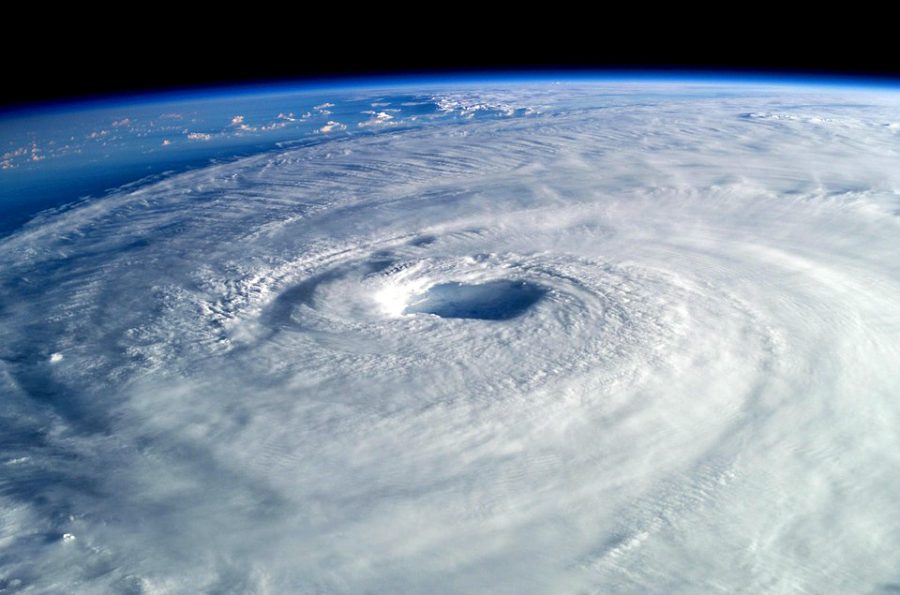This Hurricane Season Really Blows
October 23, 2019
This past summer, some may have spent hot days at some amusement park. Before too long they’d start to feel the sweat dripping down their necks, and the hot sun blazing against their face. To alleviate the heat, they might look to a hurricane simulator. For $5, a customer gets stands in a windy, loud, plastic container, supposedly recreating a hurricane. But nothing truly simulates the chaos that these natural disasters bring, and the wreckage they leave in their wake. No simple simulator can replicate neither the terror they bring nor the trauma they leave. Already, there have been four hurricanes so far this hurricane season: Hurricanes Barry, Humberto, Jerry, and Dorian, all of which have had lasting effects.
Hurricane Barry formed in the Gulf of Mexico and hit just at the bottom of Louisiana, weakening into a tropical storm soon after. Hurricane Dorian developed near the Lesser Antilles between the Caribbean Sea and the Atlantic Ocean, quickly escalating into a category-5 hurricane (the strongest category), sweeping through the Bahamas and weakening into a category-1 hurricane as it hit Cape Hatteras and Nova Scotia, Canada. Hurricane Humberto formed near the Bahamas, reaching a category of 3 before dwindling, and going past Bermuda before dying out. Hurricane Jerry started as a tropical storm, becoming more powerful and developing into an actual hurricane, and then weakened at sea, according to CNN’s 2019 Atlantic Hurricane season list.
Dorian originated as a tropical storm. It began east of the Lesser Antilles in the Caribbean and quickly moved Northwest. Although Dorian impacted many places, all the way up to Canada, none of it compared to the damage it left behind in the Bahamas. It demolished the Bahamas, claiming the title of the worst hurricane the country has ever experienced, and has taken the lives of at least 56, and quite possibly hundreds more, according to the weather news. It has caused up to $7.5 billion in damage and created 1.5 billion pounds of debris on the island of only a mere 400,000 people, many of whom have fled or are still missing.
Many suspect that the Bahamas will never fully recover. However, through this time of desperation and what seems like hopelessness to some of the people, there have also been plenty of people ready to help out in any way they can, whether it be donating or going and aiding first hand.
Barry, on the other hand, has resulted in only one fatality, but still over $600 million of damage. Barry seemed to hover over the Southeast of the US, particularly Louisiana, Arkansas, and Oklahoma. Humberto was also fairly minor, reaching the same death toll of one, but also causing one missing person, the damage and hence cost of it, it still undetermined. Jerry only reached category 3 before nearly dissipating.
The intensity and level of hurricanes quickly are becoming a topic of confusion and concern for many climate scientists and meteorologists. In an interview with Madeline Rowland ’22, the student expressed worry over the extensive damage that hurricanes cause, and with even more category 4’s and 5’s, the damage left behind is all the more distressing. CBS cites that Dorian is now one of the 35 category-5 hurricanes that have occurred in the Atlantic. Kaitlyn Norton, who teaches Biology 2 and Environmental Science at WFS, “The proportion of hurricanes that are the strongest, categories 4 and 5, are increasing. It is unclear whether the frequency of these storms will increase but the potential damage from these high-intensity storms can be devastating.” She continued, saying that these storms destroy communities, so much so that they may not be able to even prepare in time for the next hurricane. There is becoming a noticeable increase of category 4 and 5 hurricanes over the years and the damage they leave in their wake is a stark reminder that something needs to be done about them.
The relief efforts after Hurricane Dorian have been very positive. The U.S. government has been working with the Bahamas government to deliver emergency aid. Much humanitarian assistance and aid has been given to those affected in America, and taking more provisions to anyone impacted by this hurricane. Other American nations have added further support.
Yet there is always more that can be done; as Caroline Vanderloo ’22 says, “While I think that islands are becoming more prepared, we could be doing a lot more to help the islands further prepare for the future.” Hannah Blackwell ’20 agreed; “Hurricanes usually reveal socioeconomic differences in the communities because they are not able to recover as quickly due to lack of insurance and other resources. vulnerable communities need nationwide intervention to shorten the recovery process.” While hurricane season may be coming to a close, there is much to be done to prepare for next year.































